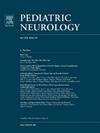Predictors of Surgical Failure in Pediatric Lesional Temporal Lobe Epilepsy Surgery
IF 3.2
3区 医学
Q2 CLINICAL NEUROLOGY
引用次数: 0
Abstract
Background
Epilepsy surgery can potentially cure pharmacoresistant temporal lobe epilepsy (TLE) in children. However, surgical failures, where patients continue to experience seizures, still exist. We evaluated outcomes in pediatric patients after resective temporal lobe surgery to identify risk factors for failure.
Methods
Data on pediatric patients with TLE who underwent surgery were prospectively collected at our institution. Minimum follow-up (FU) was three years after surgery. Resections were stratified into extended resections, i.e., anterior temporal lobectomies, and sparing resections, i.e., lesionectomies and selective amygdalohippocampectomies. Ongoing seizures and relapses within the first three years were considered surgical failures.
Results
We included 96 patients after 43 sparing and 52 extended resections from 1993 to 2019 with a median FU of 10.1 years (range 3.0 to 28.3 years). Pathohistology most frequently revealed epilepsy-associated tumors (44.8%), hippocampal sclerosis (37.5%), and focal cortical dysplasias (12.5%). One year postoperatively, 69.8% were seizure free, increasing to 78.5% after five and 72.9% after 10 years. Sparing resections increased the odds for surgical failure in a multivariate analysis (odds ratio: 4.63, P = 0.006). Preoperative focal onset to bilateral tonic-clonic seizures increased the likelihood of seizure relapses (hazard ratio: 3.89, P = 0.006) and contributed to higher odds of surgical failure (odds ratio: 2.79, P = 0.002).
Conclusions
Pediatric patients with TLE undergoing surgery have high rates of long-lasting favorable seizure outcomes. Resection strategy is a prognostic factor for early surgical success in favor of larger resections. Relapses were more frequent in children with focal onset to bilateral tonic-clonic seizures beforesurgery.
小儿颞叶局限性癫痫手术失败的预测因素。
背景:癫痫手术有可能治愈儿童耐药性颞叶癫痫(TLE)。然而,手术失败,即患者癫痫继续发作的情况仍然存在。我们评估了儿童患者颞叶切除手术后的疗效,以确定手术失败的风险因素:方法:本院前瞻性地收集了接受手术的儿童TLE患者的数据。最短随访时间(FU)为术后三年。切除术分为扩大切除术(即前颞叶切除术)和保留切除术(即病灶切除术和选择性杏仁核切除术)。头三年内癫痫持续发作和复发被视为手术失败:从1993年到2019年,我们共收治了96名患者,其中43人接受了保留切除术,52人接受了扩大切除术,中位FU为10.1年(范围为3.0至28.3年)。病理组织学最常见的是癫痫相关肿瘤(44.8%)、海马硬化(37.5%)和局灶性皮质发育不良(12.5%)。术后一年,69.8%的患者无癫痫发作,五年后增至78.5%,十年后增至72.9%。在多变量分析中,稀疏切除增加了手术失败的几率(几率比:4.63,P = 0.006)。术前双侧强直阵挛发作病灶起病增加了发作复发的可能性(危险比:3.89,P = 0.006),并导致手术失败的几率增加(几率比:2.79,P = 0.002):结论:接受手术治疗的小儿TLE患者具有较高的癫痫长期良好预后。切除策略是早期手术成功的预后因素,有利于大面积切除。手术前局灶性发作至双侧强直-阵挛发作的患儿复发率更高。
本文章由计算机程序翻译,如有差异,请以英文原文为准。
求助全文
约1分钟内获得全文
求助全文
来源期刊

Pediatric neurology
医学-临床神经学
CiteScore
4.80
自引率
2.60%
发文量
176
审稿时长
78 days
期刊介绍:
Pediatric Neurology publishes timely peer-reviewed clinical and research articles covering all aspects of the developing nervous system.
Pediatric Neurology features up-to-the-minute publication of the latest advances in the diagnosis, management, and treatment of pediatric neurologic disorders. The journal''s editor, E. Steve Roach, in conjunction with the team of Associate Editors, heads an internationally recognized editorial board, ensuring the most authoritative and extensive coverage of the field. Among the topics covered are: epilepsy, mitochondrial diseases, congenital malformations, chromosomopathies, peripheral neuropathies, perinatal and childhood stroke, cerebral palsy, as well as other diseases affecting the developing nervous system.
 求助内容:
求助内容: 应助结果提醒方式:
应助结果提醒方式:


